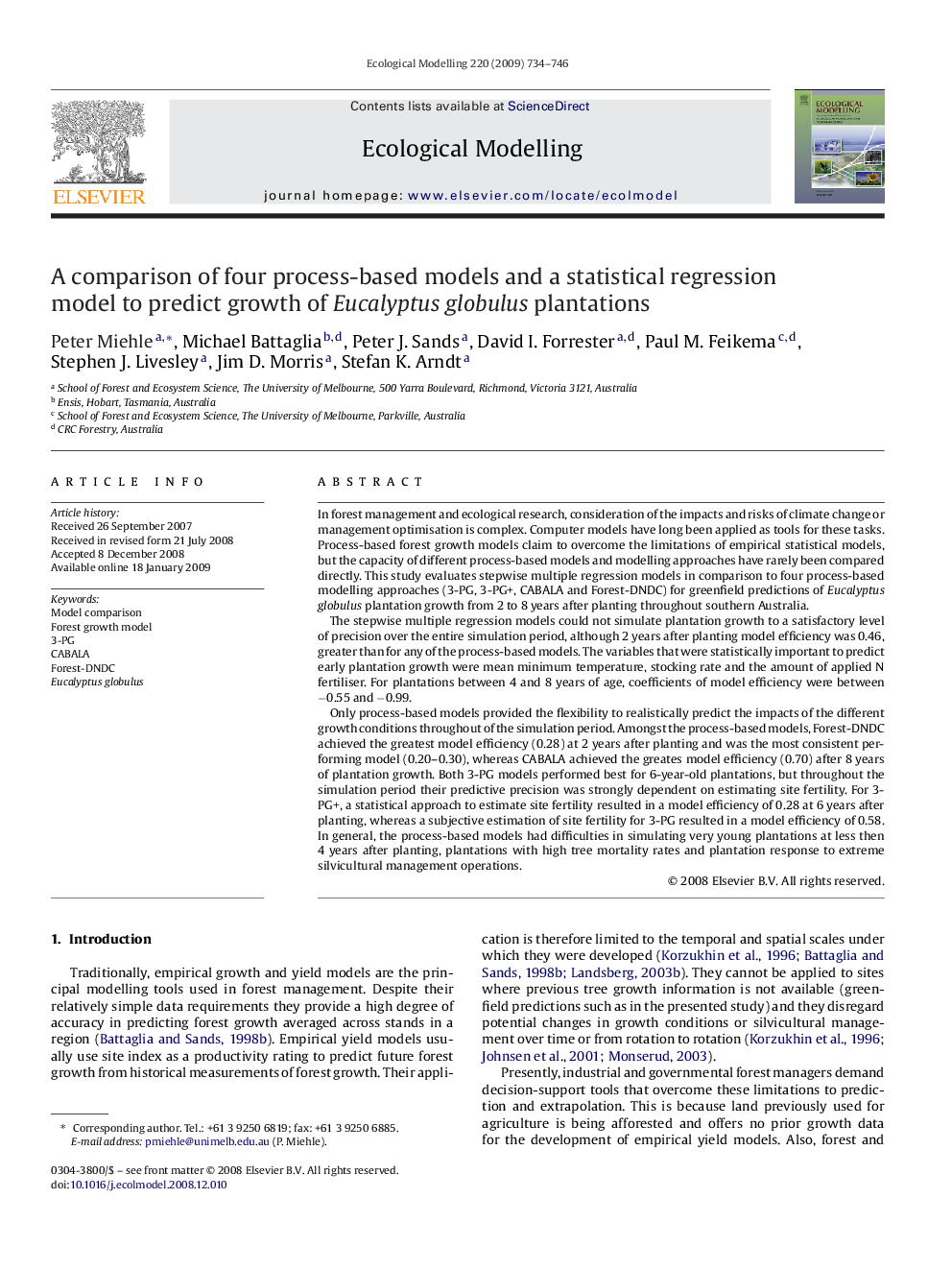| Article ID | Journal | Published Year | Pages | File Type |
|---|---|---|---|---|
| 4378201 | Ecological Modelling | 2009 | 13 Pages |
In forest management and ecological research, consideration of the impacts and risks of climate change or management optimisation is complex. Computer models have long been applied as tools for these tasks. Process-based forest growth models claim to overcome the limitations of empirical statistical models, but the capacity of different process-based models and modelling approaches have rarely been compared directly. This study evaluates stepwise multiple regression models in comparison to four process-based modelling approaches (3-PG, 3-PG+, CABALA and Forest-DNDC) for greenfield predictions of Eucalyptus globulus plantation growth from 2 to 8 years after planting throughout southern Australia.The stepwise multiple regression models could not simulate plantation growth to a satisfactory level of precision over the entire simulation period, although 2 years after planting model efficiency was 0.46, greater than for any of the process-based models. The variables that were statistically important to predict early plantation growth were mean minimum temperature, stocking rate and the amount of applied N fertiliser. For plantations between 4 and 8 years of age, coefficients of model efficiency were between −0.55 and −0.99.Only process-based models provided the flexibility to realistically predict the impacts of the different growth conditions throughout of the simulation period. Amongst the process-based models, Forest-DNDC achieved the greatest model efficiency (0.28) at 2 years after planting and was the most consistent performing model (0.20–0.30), whereas CABALA achieved the greates model efficiency (0.70) after 8 years of plantation growth. Both 3-PG models performed best for 6-year-old plantations, but throughout the simulation period their predictive precision was strongly dependent on estimating site fertility. For 3-PG+, a statistical approach to estimate site fertility resulted in a model efficiency of 0.28 at 6 years after planting, whereas a subjective estimation of site fertility for 3-PG resulted in a model efficiency of 0.58. In general, the process-based models had difficulties in simulating very young plantations at less then 4 years after planting, plantations with high tree mortality rates and plantation response to extreme silvicultural management operations.
